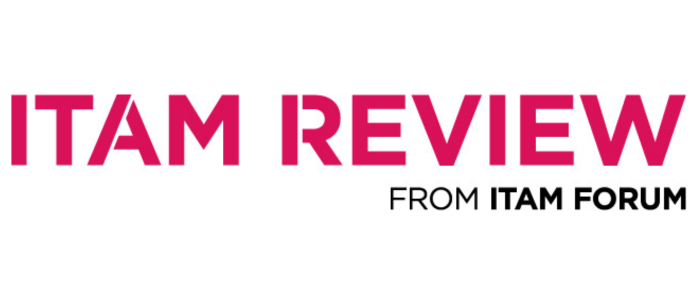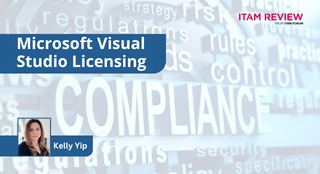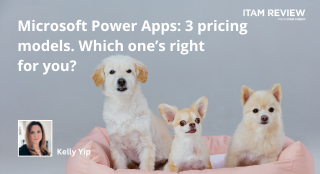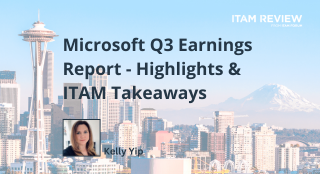Oracle Database License Management Verification Standard V1.0
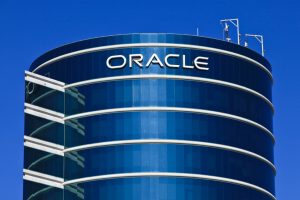
An independent verification for Oracle license management
Back in April last year we published a comparison of five SAM tools with Oracle License Management capabilities (See: Oracle License Management Group Test – The Results).
This previous group test above was based on a questionnaire completed by participating vendors and an online briefing to quiz vendors on their capabilities.
For 2016, we would like to take this up a notch by formally benchmarking tool manufacturers against an open standard (This article) using real customer data.
An open standard for Oracle Database License Management
The details published below are a first draft of our open standard for the management of Oracle database.
i.e. If I want to invest in tooling to manage the risk and cost of Oracle database licensing in my environment – what should I be looking for?
We are publishing this standard so that others may add or critique it – please provide your feedback via the comments below and we will update the standard accordingly.
The ITAM Review will use this standard to verify tools for Oracle License Management. Oracle already run their own verification process for tools (Further info here). The ITAM Review verification process has two notable differences compared to the Oracle LMS program:
- Our verification process will be open, transparent and collaborative. It will evolve with the industry over time (Hence sharing this open standard).
- Oracle’s current tool verification process relates to inventory only and not the Oracle license management reconciliation process. The ITAM Review verification will test both inventory and reconciliation (as you can read below).
Tools will be benchmarked using real customer data to independently verify whether they meet the criteria below.
Oracle Database License Management Verification Standard V1.0
Version 1.0 Published 17th November 2015
Implementation prerequisites
- Are all the prerequisites required for successful discovery and Oracle license management reconciliation included in the documentation?
- Does the customer or partner need to get more privileges along the way (root access when pre-requisite says read only, access to OVMM etc.) to complete the inventory?
Discovery
- Ability to select and scan a network segment for the existence of Oracle instances when their existence is not known
Inventory
Software
- DB version (Major and minor versions numbers e.g. Oracle 12.1.0.2)
- DB edition
- Options installed
- Options in use
- Access to raw data (user names, times and dates an option has been used)
Hardware set up
- Physical or virtual (If virtual relationship to physical host and cluster)
- Host hardware data incl. failover and other passive servers
Clusters
- Ability to capture the complete hardware cluster
Virtualization
- Ability to interpret hardware partitioning according to Oracle rules e.g. IBM, SUN, etc.
- Ability to determine number of licensable cores in an Oracle VM set up
Application recognition
Components
- Are the installations automatically assigned to the right product/license
Contract, License, Organization and Financial data
- Manual or batch import
- Skills profile – Is this something a SAM person could do or Oracle DB expert?
- Support for all Oracle contract levels and interdependencies
- Order number, contract number, support number and support contract number
- Are all Oracle license models supported
- Processor, NUP, nonstandard and old models
- Organization structure support
- Financial data management
Compliance calculation & reporting
- Is compliance calculated automatically?
- Are prerequisites considered e.g. if tuning is used then you also need diagnostics
- Are unlicensed product installations shown as missing licenses or only the licensed ones?
- Does the calculation take into consideration complete hardware clusters, hardware partitioning, DB options used by Oracle’s own users only, options used in the past that trigger an audit risk
- Can licenses be tied to a server or business unit etc.?
- Can licenses be handled as a pool?
Audit readiness
Does the tool automatically generate an Oracle Server Worksheet?
User friendliness and user manuals
- Is there a manual that guides the SAM manager through the set up and management of the tool?
- Is there a help desk that will answer customer SAM work related questions?
- An active user group, forum, external consultants or other support network for the customer?
CALL FOR CRITIQUE
We welcome your feedback on this first draft, have we missed anything? is it realistic? Please let us know via our contact form or leave a comment below. Thanks, Martin
Can’t find what you’re looking for?
More from ITAM News & Analysis
-
Broadcom vs Siemens AG - A Brewing Storm
The ongoing legal battle between VMware (under Broadcom ownership) and Siemens is yet another example of why ITAM goes far beyond license compliance and SAM. What might, at first glance, appear to be a licensing dispute, ... -
Shifting Left Together: Embedding ITAM into FinOps Culture
During one of the keynotes at the FinOps X conference in San Diego, JR Storment, Executive Director of the FinOps Foundation, interviewed a senior executive from Salesforce. They discussed the idea of combining the roles of ... -
Addressing the SaaS Data Gap in FinOps FOCUS 2.1
I recently reported on the FinOps Foundation’s inclusion of SaaS and Datacenter in its expanded Cloud+ scope. At that time, I highlighted concerns about getting the myriad SaaS companies to supply FOCUS-compliant billing data. A couple ...
Podcast
ITAM training
Similar Posts
-
Microsoft Visual Studio Licensing Guide: Reduce Risks
(This article was reviewed and updated on 3 July 2025) Visual Studio Licensing Visual Studio subscriptions are licensed Per User with each licensed user able to. “install and use the software on any number of device”. ... -
Broadcom vs Siemens AG - A Brewing Storm
The ongoing legal battle between VMware (under Broadcom ownership) and Siemens is yet another example of why ITAM goes far beyond license compliance and SAM. What might, at first glance, appear to be a licensing dispute, ... -
Microsoft Power Apps: Current Pricing Models Comparison
Back in November 2021, Microsoft made Power Apps available under the pay-as-you-go (PAYG) model, alongside the traditional Per User/Per App options. This PAYG model has gained popularity. It ensures simple rightsizing for Power Apps environments. Here, ... -
Microsoft Q3 Soars as AI and Azure Growth Fuels Market Gains
On the 30th April, Microsoft released its Q3 quarterly earnings report, exceeding expectations and igniting investor optimism. Investors had been keeping a watchful eye on Azure’s Cloud performance after Microsoft’s Q2 Cloud results fell short of ...
